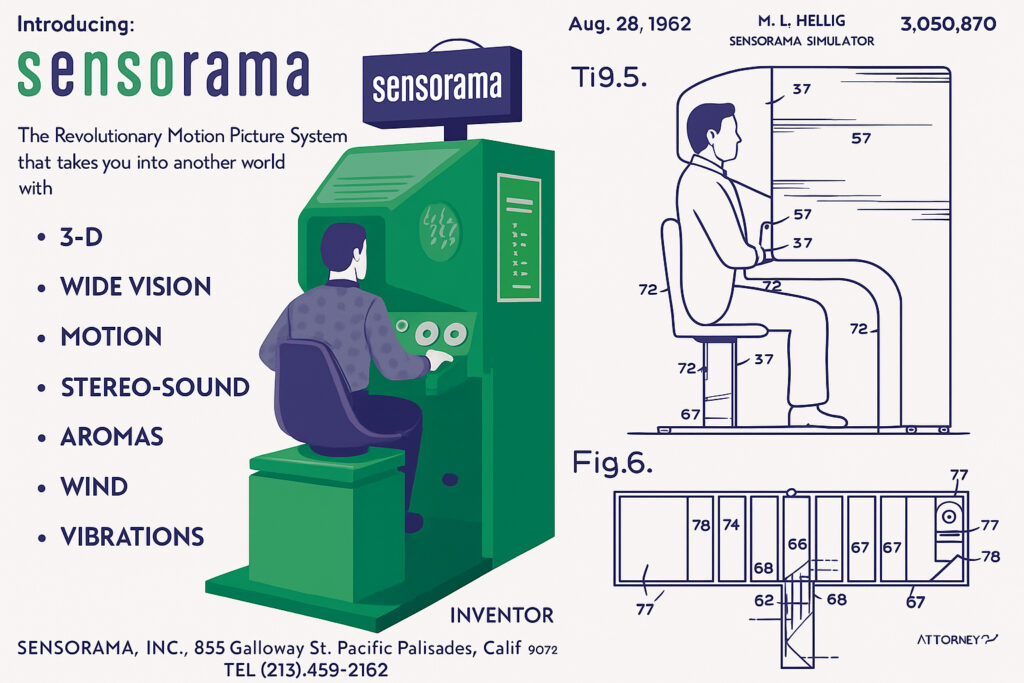
The future of AR (Augmented Reality) and VR (Virtual Reality) is rapidly approaching. While there are still challenges to overcome before mass adoption, many of those hurdles will be solved in the coming years.
When that happens, storytelling will evolve into story living. We’ll shift from passive observers to active participants. We’ll move beyond 2D screens and step into fully immersive 3D mixed reality experiences.
Excited yet? You should be. The truth is, we have been on this journey for a long time.
VR’s roots go back to the Sensorama, invented in 1962, not 1968 as is often misquoted. It is widely considered the birth of VR and represents what Gartner might call an Innovation Trigger, an early proof of concept that lit the spark for everything that followed.
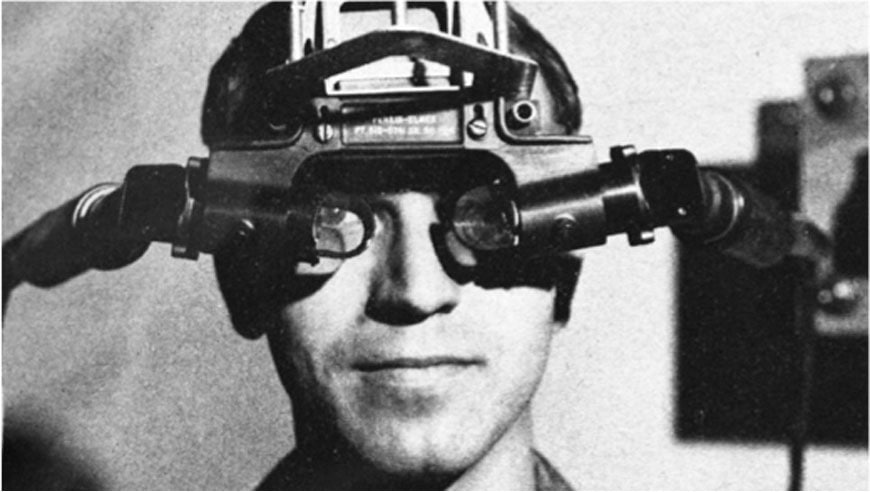
A head-mounted device known as the Sword of Damocles was also invented around the same time. It is often credited as the first augmented reality headset. The foundational ideas behind augmented reality and virtual reality were established more than 60 years ago.
While both technologies may look primitive by today’s standards, they represent the early stages of a much longer journey. Most innovations are not sudden breakthroughs. They evolve slowly over time through a series of incremental improvements.
The Gartner Hype Cycle is a visual framework that illustrates how the perceived value of a technology changes over time. It helps us understand the typical lifecycle of innovation, from early excitement to long-term productivity. This progression often takes decades and is divided into five key phases.
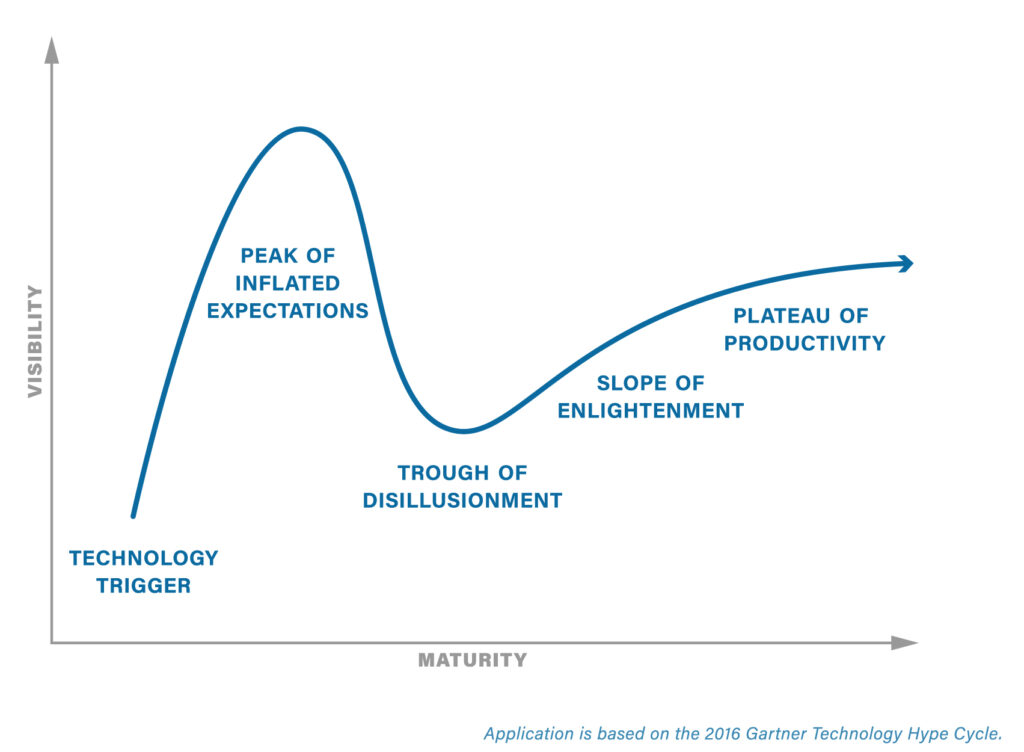
Every emerging technology tends to move through five key phases in its life cycle, as outlined by the Gartner Hype Cycle:
1. Innovation Trigger
A potential breakthrough sparks early excitement. Proof-of-concept prototypes and media buzz generate attention, but there are usually no usable products yet, and the technology’s viability is still uncertain.
2. Peak of Inflated Expectations
Publicity fuels a wave of early success stories, often followed by a wave of failures. Some companies dive in early while others remain skeptical.
3. Trough of Disillusionment
Interest fades as early efforts fall short. Many developers and companies abandon the technology. Only the strongest or most committed continue, often improving their products to meet real-world demands.
4. Slope of Enlightenment
Real use cases start to emerge. Second and third versions of the technology appear, and more companies begin experimenting. Adoption grows, though some organizations stay on the sidelines.
5. Plateau of Productivity
Mainstream adoption begins. The technology proves its value across industries, and standards for evaluating success become clearer. Its relevance and impact are now widely recognized.
According to Gartner, both augmented reality and virtual reality have matured so rapidly that it is no longer considered an “emerging technology” anymore. They are no longer novelties. That was not the case back in 2012.
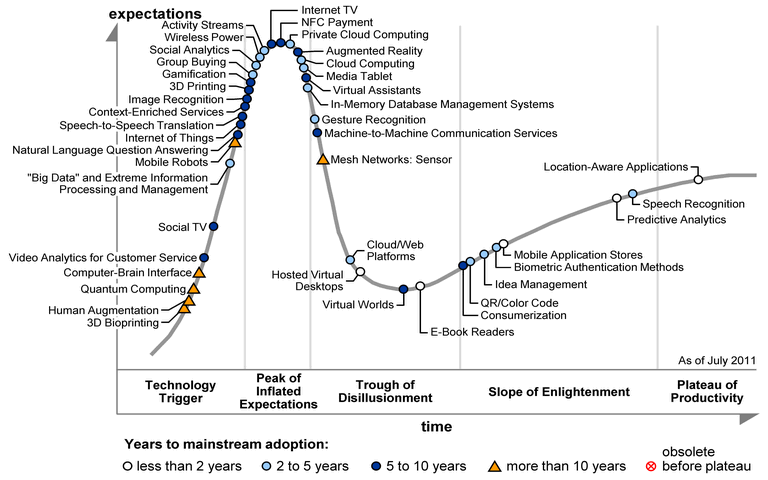
In 2012, an advertising firm contacted me to develop an augmented reality app for their client, Brine Gloves. They wanted to showcase several of their highly customizable lacrosse gloves using accurate digital replicas that matched what customers would find in stores.
At the time, several technologies were finally coming together, making it possible to explore this new and exciting form of interactive media.
For the first time, a typical mobile device could use its built-in camera, processor, and display to render a digital object on top of a printed graphic marker called a fiducial.
This process is known as image recognition, where the device scans a visual reference, such as a QR code or a custom symbol, and determines its position and orientation in space. Using that data, the device can place a 3D model over the marker, creating the illusion that the digital object exists in the real world.
At the time, the limitations and barriers felt almost impossible to overcome. The processing power of an iPad was nowhere near what we have today. Fortunately, I was unaware of just how many challenges I was about to face.
As a veteran 3D game artist, I could handle much of the work, but I was unfamiliar with the full complexity of delivering a compelling experience across new digital workflows and formats. Many of the steps I was learning for the first time.
It became a digital journey.
From scanning high resolution industrial design models to creating immersive experiences on devices with limited power, every stage required exploration and adaptation.
There was so much to learn, and at that point, augmented reality was still uncharted territory. Virtual reality would not become widely accessible for another five years.
Even so, the appeal of augmented reality was, and still is, incredibly strong. Without question, it remains one of the most exciting technological innovations of our time.
At the time, iPads were limited by the number of polygons they could draw. The polygons are little triangles used to draw the surface of a 3D object.
There are millions in the image below.
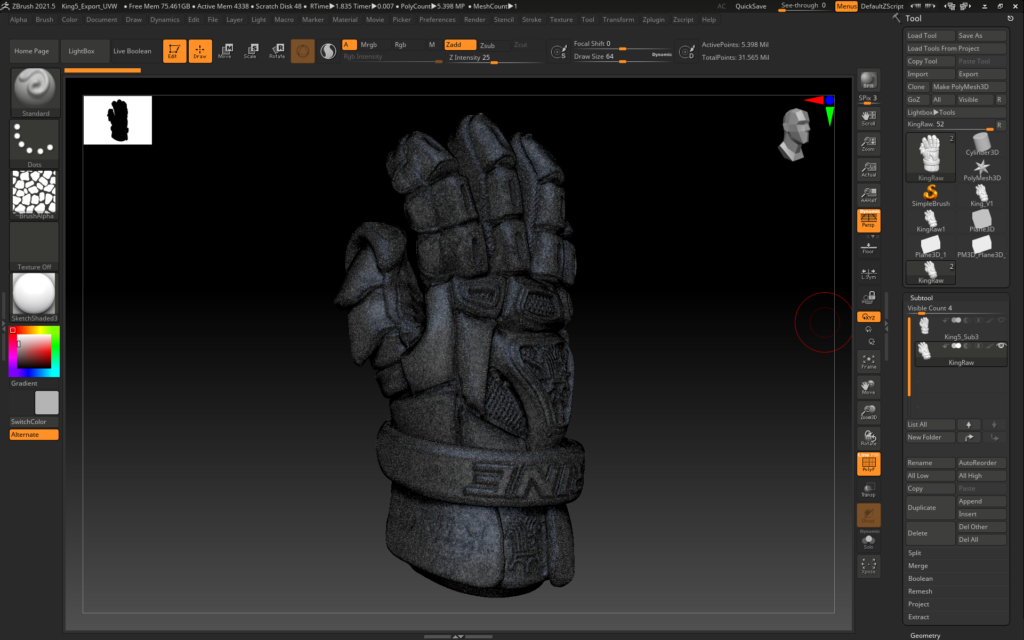
The gloves needed to be exact digital replicas, so they were sent out for scanning—a process that was still evolving at the time.
When the scanned models came back, they had to be cleaned up and prepared through a process called retopologizing. Each glove took several days to redraw and optimize. Once complete, the models were broken into subgroups to allow color customization within ZBrush 2.0.
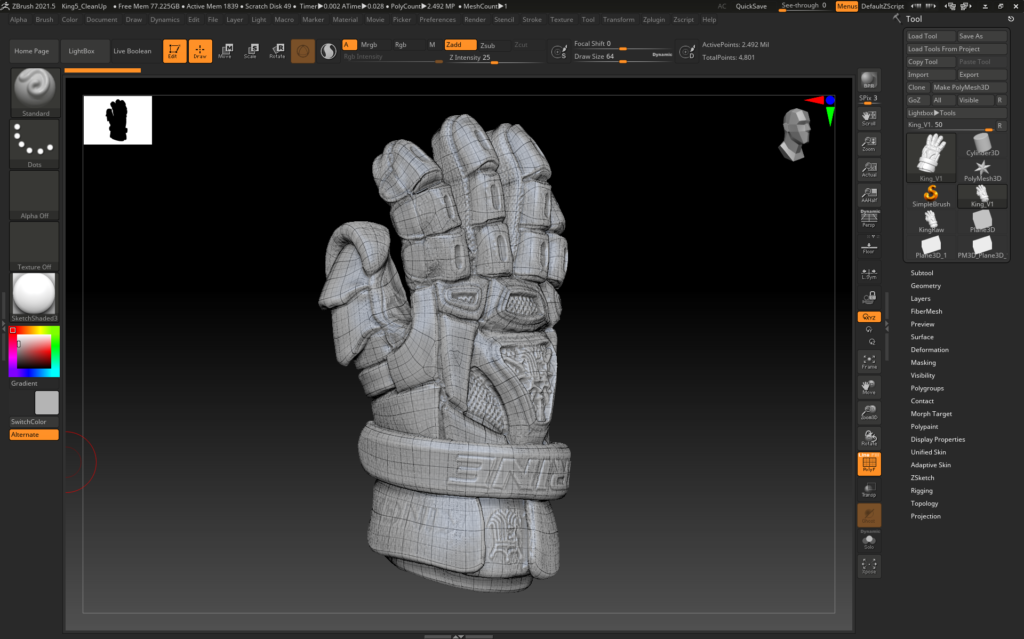
3D Studio Max was used to add animations, assign material properties, and organize the 3D objects. A final layer of detail was also needed, since the scanner could not capture smaller elements like laces and eyelets.

I chose to build the experience in Unity, which remains one of the most accessible platforms for creating augmented reality applications. Unity is a 3D game engine originally built for independent developers, and at the time, it was the only practical option for authoring AR content.
To meet the performance limitations of mobile devices, I had to rely heavily on traditional game art techniques. Instead of allowing the iPad to calculate lighting and shadows in real time, that visual information had to be baked into the textures of the glove models. This approach ensured smooth performance and visual fidelity on limited hardware.
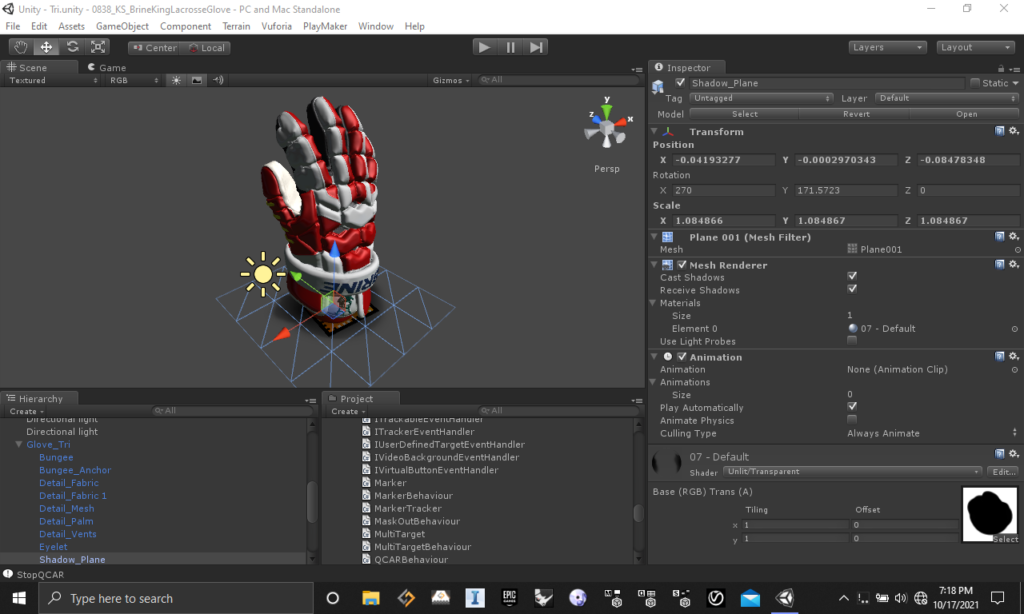
The real breakthrough was using Playmaker inside Unity. Without it, the project would not have been possible. While Playmaker was not a magic button or a substitute for coding knowledge, it allowed me to approach the project both as a creative artist and as a technical problem solver. I was able to script the entire experience visually, without writing traditional code.
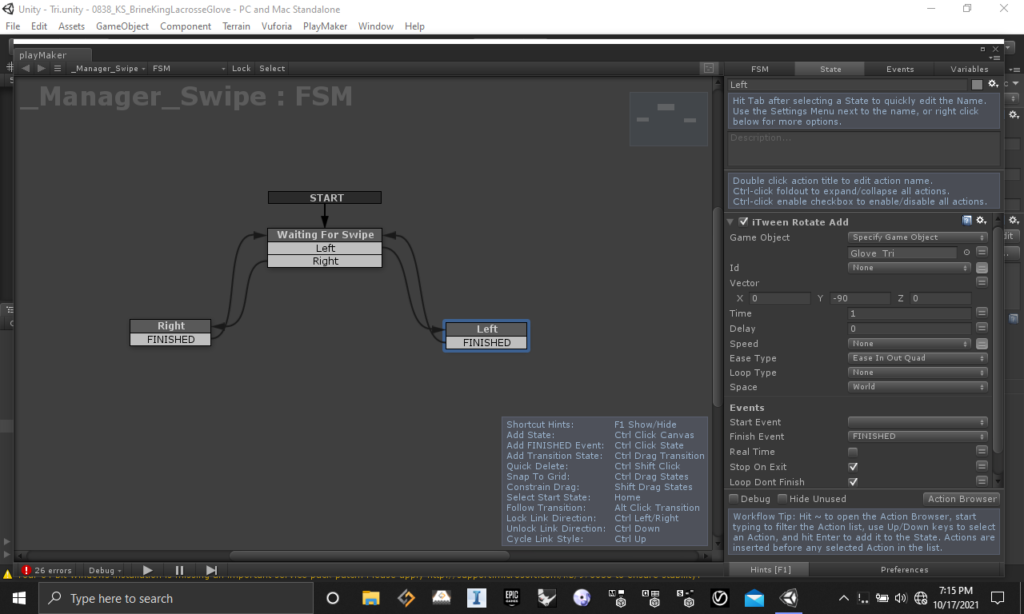
The image above shows a set of basic swipe controls. Below it is a collection of actions and variables used to change the color of different parts of each glove.
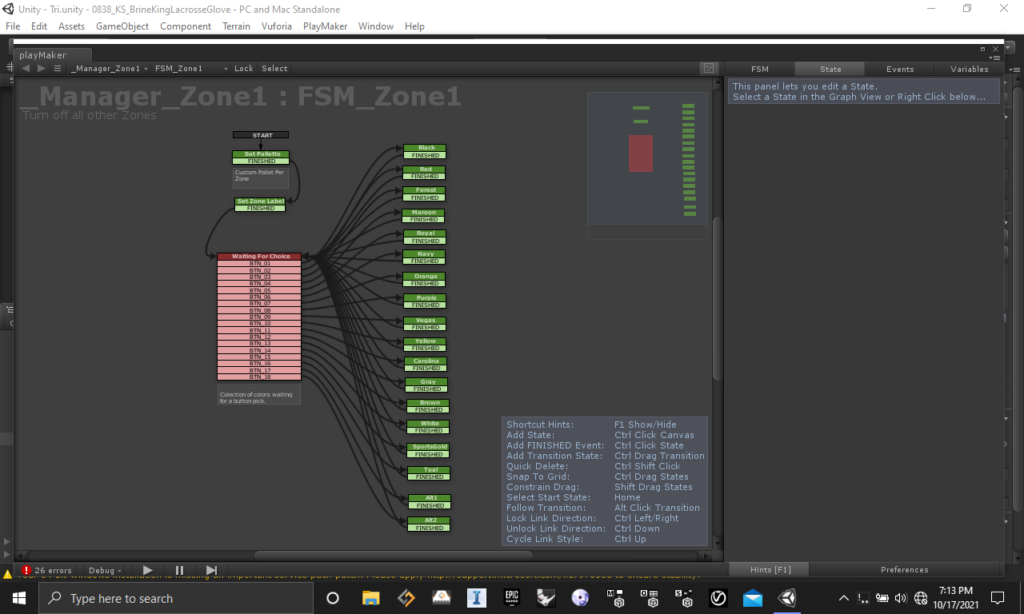
The image below shows the application in action. As you can see, the audience was fully engaged, customizing gloves and sharing their creations with friends. The project was a major success and led to several more augmented reality applications in the years that followed.
Unfortunately, the technology available in 2012 brought challenges that could not be solved or were simply out of my control.
The Trough of Disillusionment follows the Peak of Inflated Expectations, and in this case, it was a deal breaker.
The most difficult part was submitting the app to the store. While this process is faster today, back then it could take weeks for an app to be approved. In some cases, approval would not come without significant changes.
The limitations were intense, and the level of dedication required to complete a project like this was overwhelming. The entire process took three months. Imagine going through every step of development, only to have the app rejected at the end. That is not something a client is prepared to hear.
This was a true Trough of Disillusionment.
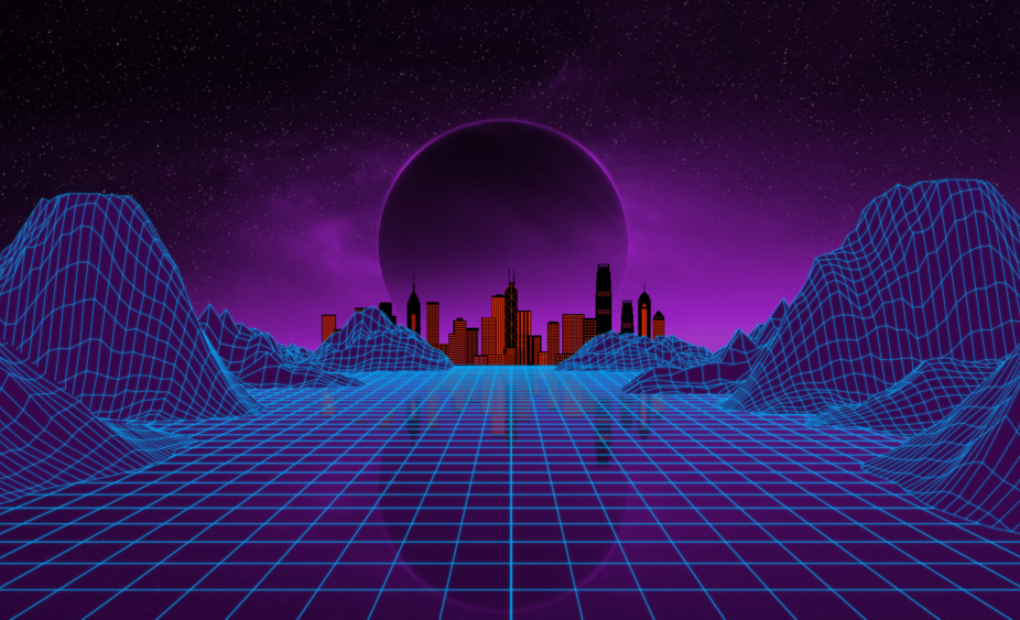
According to Gartner, both augmented reality and virtual reality have advanced so quickly that they are no longer considered emerging technologies. They are no longer novelties.
I look forward to diving back into AR and exploring the innovations that have emerged since my first project. The tools alone take years to master, and now feels like the right time to return to this evolving space.
Lately, there has been a growing conversation about the Metaverse. What is the Metaverse? It is a shared virtual world or a network of worlds that are interactive, immersive, and collaborative. It will combine both augmented and virtual experiences.
Just as the physical universe is made up of many connected worlds, the Metaverse can be seen as a collection of digital spaces that coexist and interact.
This feels like the early days of the internet, except it is spatial.
While the Metaverse is surrounded by hype, influential voices like John Carmack, Tim Sweeney, and Jules Urbach are building the infrastructure to make it real.
Facebook has rebranded as Meta and plans to release its first AR device next year, along with Apple. These are just a few signs that we are reaching a tipping point.
This shift will change how we design, build, and experience our world in extraordinary ways. From architecture and theme parks to immersive media and storytelling.